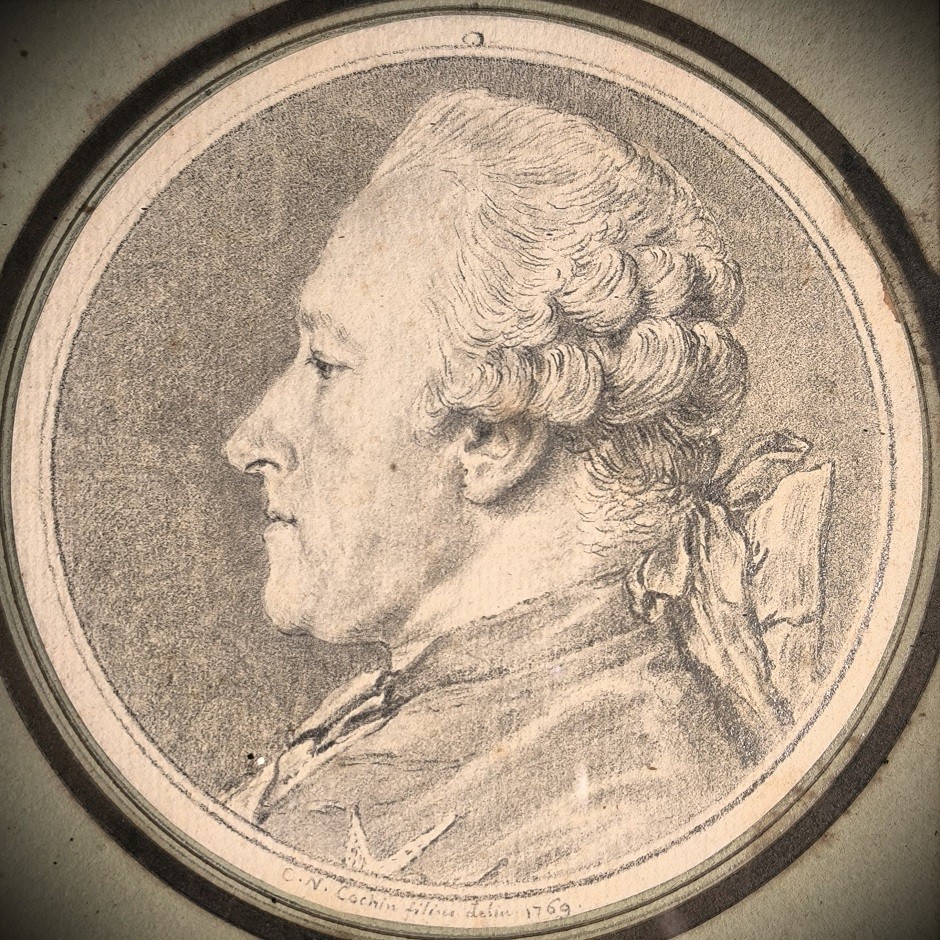Charles-Nicolas COCHIN (1715-1790)
Demande d'informations
| Black chalk on paper in tondo |
| Signed and dated at the bottom C N Cochin filius del in 1769 |
| 10.2 cm in diameter |
More info
Charles-Juste de Beauvau, 2nd Prince of Beauvau and Prince of Craon, was born in Lunéville on 10 September 1720. Born into an influential family, he was the brother of the Marquise de Boufflers and the Maréchale de Mirepoix. He married Marie-Sophie-Charlotte de La Tour d'Auvergne, then, after her death, Marie-Charlotte-Sylvie de Rohan-Chabot.
A distinguished soldier, he served in the army from 1738, participating in the siege of Prague in 1741 and quickly rising through the ranks to become Marshal of France in 1783. He held various positions as governor, notably in Languedoc and Provence, and played a role in the liberation of Protestant prisoners from the Tower of Constance in 1767. Secretary of State for War in 1789, he supported reforms but escaped revolutionary persecution.
A man of letters despite the absence of personal works, he was a member of several academies, including the Académie Française, and surrounded himself with intellectuals such as Marmontel and Saint-Lambert. He died in 1793.
Charles-Nicolas Cochin was the son of the famous engraver of the same name. Trained by his parents and by the painter Jean II Restout, he produced his first engraving in 1727. His talent for engraving, particularly in the art of portraiture, quickly earned him recognition. He excelled at depicting the personalities of his time, producing numerous portraits of writers, artists and members of the court. His precise and elegant style, influenced by his trip to Italy (1749-1751) with the Marquis de Vandières, marked a shift towards a more refined and classical art form.
In 1751, he was admitted to the Royal Academy of Painting and Sculpture without having to submit a work for acceptance, which he did not do until 1763. The following year, he became secretary-historiographer of the Academy and keeper of the drawings in the King's Cabinet, succeeding Charles Antoine Coypel. He was also a royal censor and was granted letters of nobility in 1757, before being made a knight of the Order of Saint Michael.
Cochin played a key role in spreading artistic taste in France and in 1773 published Voyage en Italie, in which he recorded his observations on Italian works, a work still used today to trace the origin of certain looted works.
Avis
Aucun avis n'a été publié pour le moment.




